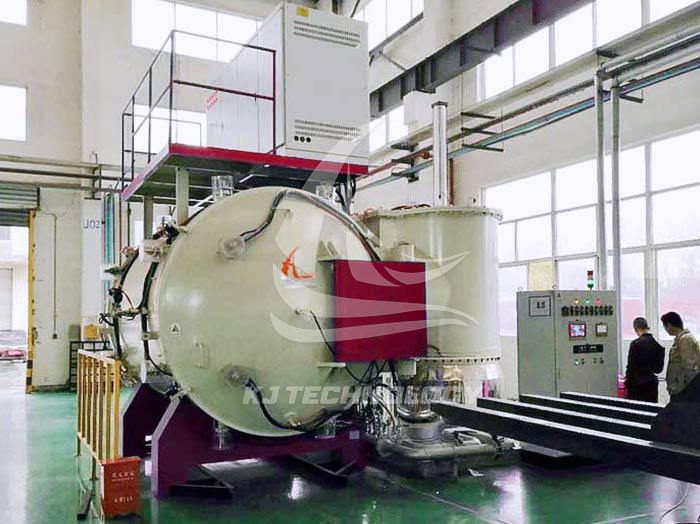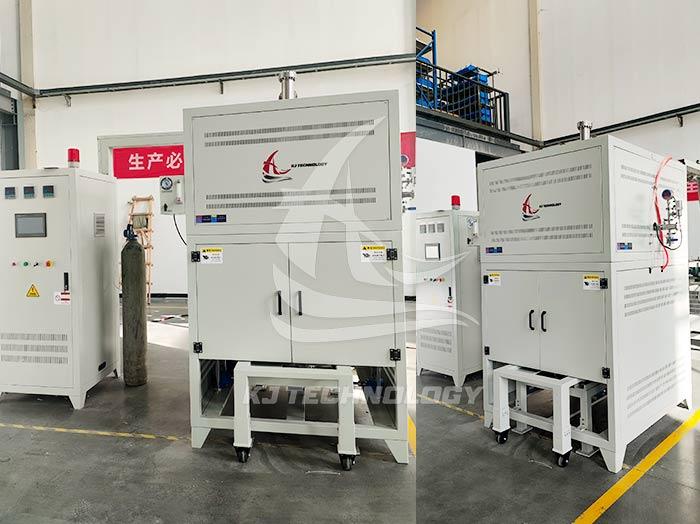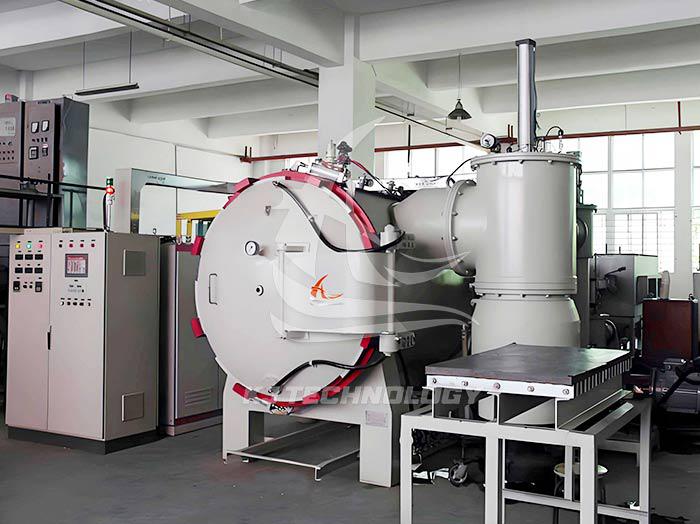Can vacuum heat treatment furnaces be used for sintering?
 05-19-2025 Author: KJ technology
05-19-2025 Author: KJ technology
Vacuum heat treatment furnaces can be used for sintering, especially in scenarios where oxidation needs to be avoided, product density needs to be improved, and material properties need to be ensured.
1. Sintering application scenarios
Powder metallurgy and metal injection molding
Objective: To densify and sinter metal powders or metal ceramic composite powders to prepare high-performance parts.
Case: Vacuum sintering of stainless steel powder injection molded parts to eliminate porosity and increase tensile strength to over 1000MPa.
Preparation of Ceramic Materials
Objective: To prepare high-purity and high-density transparent ceramics or functional ceramics.
Case: Vacuum sintering of transparent alumina ceramics under hydrogen atmosphere, with a transmittance of over 90%.
Post processing of 3D printed metal parts
Objective: To eliminate residual stress in 3D printed metal parts (such as titanium alloys and nickel based alloys) and improve density.
Case: Vacuum hot isostatic pressing sintering was performed on Ti6Al4V alloy printed by SLM, resulting in an increase in relative density from 92% to 99.5%.
2. Technical advantages
Non oxidizing sintering
Principle: A vacuum environment (≤ 10 ⁻ ³ Pa) can prevent metal surface oxidation and reduce oxide inclusions.
Value: Improve material purity, especially suitable for titanium alloys and high-temperature alloys that are sensitive to oxygen content.
Degassing and Purification
Function: Vacuum treatment can remove adsorbed gases (such as hydrogen and nitrogen) from materials and reduce pore defects.
Case: Vacuum degassing sintering of hard alloy reduces porosity to below 0.1%.
Controllable atmosphere sintering
Flexibility: Supports the introduction of inert gases (such as argon), reducing gases (such as hydrogen), or active gases (such as nitrogen and carbon) to regulate the sintering reaction.
Application: Aluminum nitride ceramics are vacuum sintered in a nitrogen atmosphere, increasing their thermal conductivity to 180 W/(m · K).
3. Material Applicability
Metallic materials
Typical case:
After vacuum sintering, the hardness of high-speed steel (M2) reaches 65 HRC, and the wear resistance is improved by 30%.
The vacuum sintering density of tungsten based heavy alloy reaches 18.5 g/cm ³, and the bending strength reaches 1200 MPa.
ceramic materials
Typical case:
Zirconia ceramics have a fracture toughness of 8 MPa · m ¹/² after vacuum sintering, making them suitable as tool materials.
Silicon carbide ceramic vacuum sintering achieves a density of 99% and is used for semiconductor equipment components.
composite material
Typical case:
The vacuum sintering of carbon fiber reinforced titanium based composite materials increases the interfacial bonding strength to 200 MPa.
Vacuum co sintering of metal ceramic gradient materials and optimization of thermal expansion coefficient matching.
4. Equipment characteristics and operating points
High vacuum and high temperature capability
Parameters: Vacuum degree can reach 10 ⁻⁴ -10 ⁻⁵ Pa, temperature range is 1200-2200 ℃.
Application: High temperature alloys (such as IN718) require vacuum sintering at temperatures above 1200 ℃ to avoid abnormal grain growth.
Atmosphere control system
Function: Supports partial pressure sintering (such as controlling oxygen partial pressure ≤ 10 ⁻² ⁰ Pa), accurately regulating material phase transition.
Case: During vacuum sintering of titanium aluminum alloy, a trace amount of argon gas is introduced to suppress the precipitation of harmful phases.
Uniform heating and rapid cooling
Technology: Using graphite heating element or induction heating, temperature uniformity ± 5 ℃; Support gas quenching (argon gas) or oil quenching.
Value: Rapid cooling can refine grain size and improve material strength.
Safety and Environmental Protection
Design: Double layer water-cooled furnace shell, explosion-proof device, exhaust gas treatment system to avoid toxic gas leakage.
Case: When sintering beryllium containing materials, beryllium vapor is collected through a vacuum system to prevent environmental pollution.








